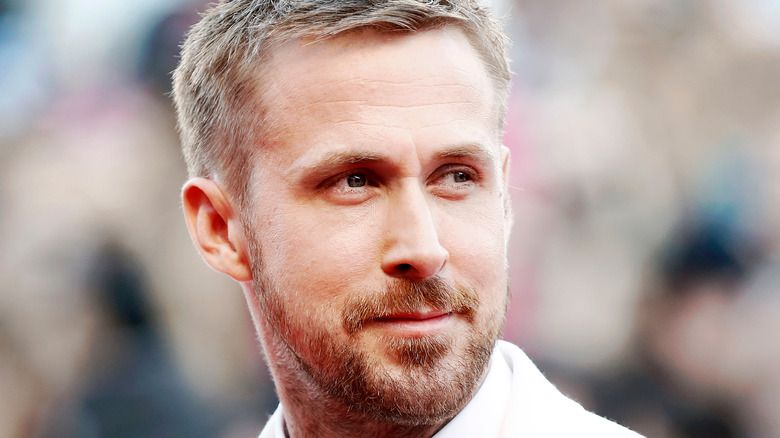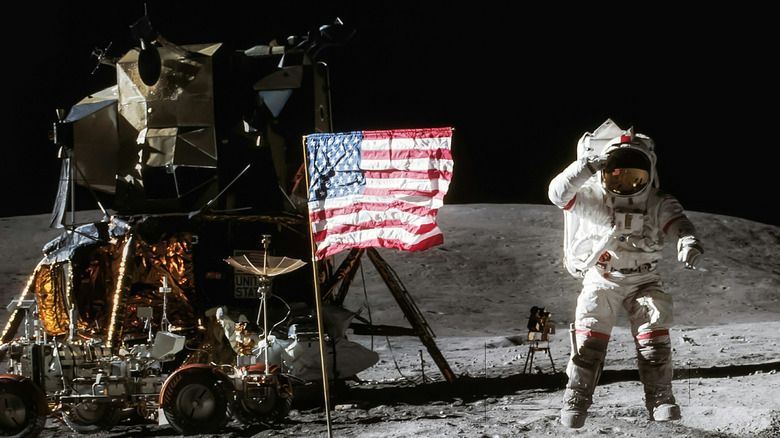How Historically Accurate Is The Movie First Man?
It is no small thing to be cast as one of the most recognizable figures in the history of space exploration. In 2018 Ryan Gosling (above) found himself in that position when he was cast as astronaut Neil Armstrong in "First Man." As has been the case with many biopics, he and director Damien Chazelle could have gone their own way with the portrayal, cutting corners for the sake of condensing eight years of historical bullet points into the runtime (via Smithsonian Air and Space).
Instead, the two stuck to the descriptions of Armstrong and his personal history laid out in his biography, written by James R. Hansen, making for a performance that is remarkably faithful to the real person (per "First Man: The Life of Neil Armstrong"). What Armstrong was like as person is as much a core element of the film as the surrounding history, and according to Armstrong's son Mark, Chazelle's efforts led to a very good (albeit not perfect) representation of the astronaut and the years leading up to his moment in history (via WCPO).
First Man does have fictitious moments, but overall is very accurate
"First Man" takes a look into many intimate and tragic details of Armstrong's private life, including songs he and his wife listened to, the loss of his daughter to cancer in 1962, the Armstrongs' near-fatal 1964 house fire, and a conversation with his sons regarding the fact that the revolutionary journey he was to undertake might cost him his life (via History vs Hollywood). That's not to say that his time on Earth training for the mission was much safer, as the movie recounts several accidents that he and his peers endured as well.
Armstrong himself, for instance, was left remarkably unharmed after a simulation of the lunar landing ended in catastrophic failure and forced him to escape via parachute. The previous year, in 1967, the future of Armstrong and his fellow crewmates was already given a grim outlook by the deaths of the Apollo 1 crew, who could not escape their capsule after a fire engulfed its oxygen-rich interior (via The Verge). Despite the immense psychological and technical hurdles, Armstrong in real life and the film finally reached the moon in 1969. Unlike in the film, he likely did not leave his daughter's bracelet on the surface (via Slate).

